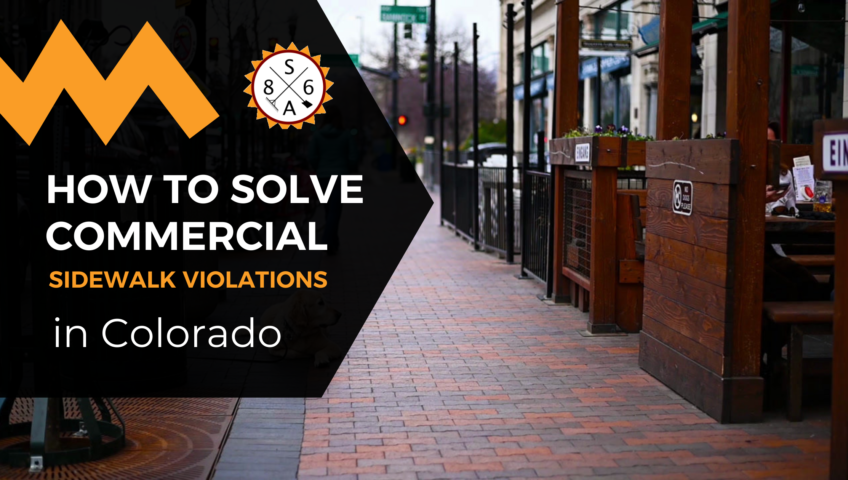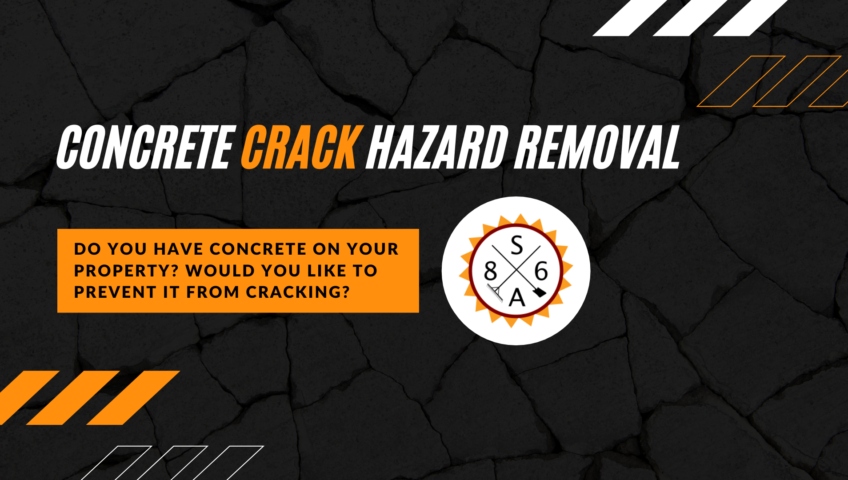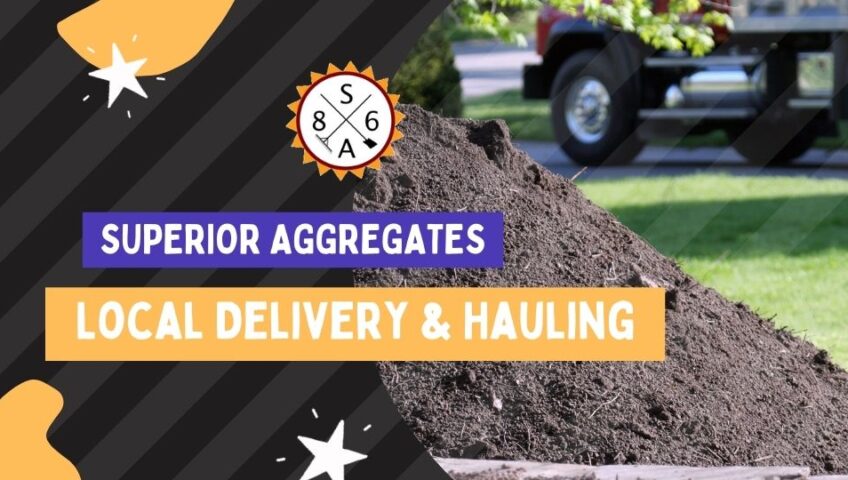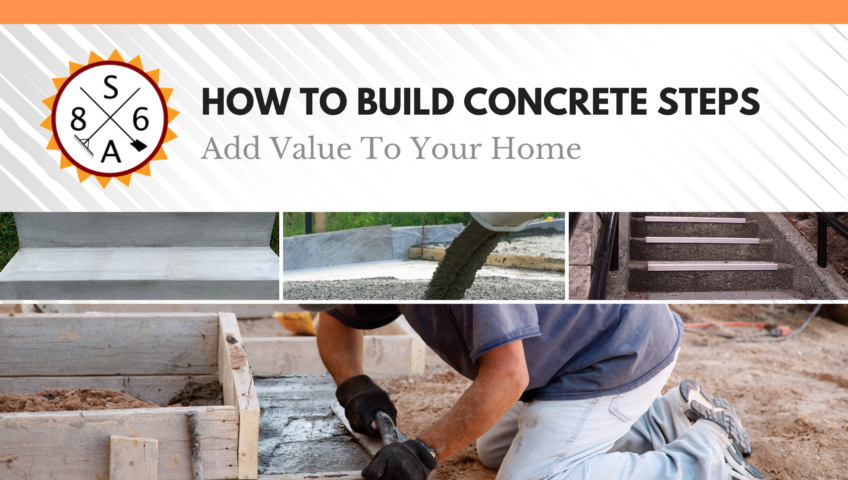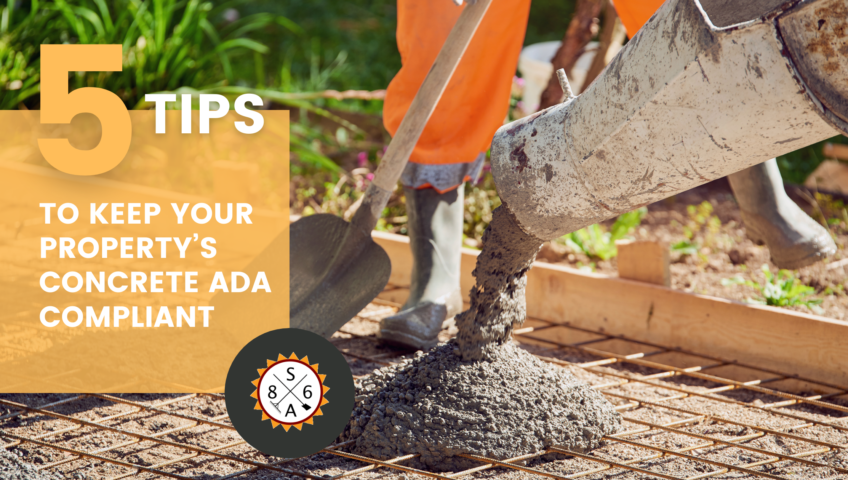
KEEP YOUR PROPERTY’S CONCRETE ADA COMPLIANT WITH THESE 5 TIPS
When you maintain ADA compliance, you signal to customers that you are committed to their care and comfort. Not complying with ADA regulations has serious consequences including loss of reputation, upset customers, and potential lawsuits.
Therefore, every business owner should understand ADA rules and regulations, including the rules for ADA compliant asphalt on your business property. Keep your property updated by following these 5 tips.
1. Make Sure Your Sidewalk Includes a Curb Ramp
Curbs pose a challenge for some people with disabilities. However, curb ramps make it easier for those using wheelchairs, canes or walkers to safely negotiate elevation changes. According to ADA regulations, you need a curb ramp installation to make it easier for those with disabilities to get around.
If you have a sidewalk with crosswalks, you need a curb ramp that follows ADA guidelines. Think of a sidewalk at an intersection where curb ramps are built-in. Curb ramps make it easy for customers with mobility issues to get around inside and outside your business.
2. Use Concrete for Access Ramps
Concrete ramps provide a durable, nearly maintenance-free material for access ramps. Concrete has high tensile strength and can handle heavy foot traffic without becoming pitted and damaged easily.
The ADA does not legislate what you need to use for your access ramps. However, the surface should deter moisture and contain enough texture to help prevent slips and falls. Concrete checks off all of these boxes and has qualities that less permanent materials, such as wood, lack. The longevity, appearance, and flexibility of concrete access ramps make concrete a natural choice.
Partner with a reputable local contractor for affordable business asphalt options.
3. Work With a Reputable Contractor
It’s important to research contractors through a number of options. First, search for a business profile at BBB.org. This will give you a list of any complaints made against the contractor and a brief summary of the company’s history. When reviewing complaints, it’s important to evaluate how the company handled unhappy customers. Every company will naturally have a few complaints, so knowing how they make it right for the customer can help you predict how responsive they are.
The company should also have references for previous jobs involving ADA compliant asphalt. Ensure that the company understands ADA regulations and ask them how they could help your business reach or retain ADA compliance. If your ramps, handrails and other ADA features are not installed correctly, you could face fines and lawsuits.
4. Meet All Requirements for Landings
You also need landings to prevent levels greater than the ADA threshold. Basically, the law prohibits level changes that surpass 1:48 at landings. For access ramps, that means installing flat landings at the top and bottom.
Here are a few guidelines to help you meet ADA rules:
- Ensure all landings are level
- Make landings as wide as the ramp
- Create landings at least 60 inches long
5. Know When You Need Handrails
Handrails are valuable tools for those with mobility issues. They provide balance and can prevent falls. If your ramp has a rise of 6 inches or more or is at least 72 inches long, you’ll need to install ADA compliant handrails.
Follow these tips for business asphalt that can help you avoid fines and make your business more inviting to those with certain disabilities.
When you maintain ADA compliance, you signal to customers that you are committed to their care and comfort. Not complying with ADA regulations has serious consequences including loss of reputation, upset customers, and potential lawsuits.
Therefore, every business owner should understand ADA rules and regulations, including the rules for ADA compliant asphalt on your business property. Keep your property updated by following these 5 tips.
1. Make Sure Your Sidewalk Includes a Curb Ramp
Curbs pose a challenge for some people with disabilities. However, curb ramps make it easier for those using wheelchairs, canes or walkers to safely negotiate elevation changes. According to ADA regulations, you need a curb ramp installation to make it easier for those with disabilities to get around.
If you have a sidewalk with crosswalks, you need a curb ramp that follows ADA guidelines. Think of a sidewalk at an intersection where curb ramps are built-in. Curb ramps make it easy for customers with mobility issues to get around inside and outside your business.
2. Use Concrete for Access Ramps
Concrete ramps provide a durable, nearly maintenance-free material for access ramps. Concrete has high tensile strength and can handle heavy foot traffic without becoming pitted and damaged easily.
The ADA does not legislate what you need to use for your access ramps. However, the surface should deter moisture and contain enough texture to help prevent slips and falls. Concrete checks off all of these boxes and has qualities that less permanent materials, such as wood, lack. The longevity, appearance, and flexibility of concrete access ramps make concrete a natural choice.
Partner with a reputable local contractor for affordable business asphalt options.
3. Work With a Reputable Contractor
It’s important to research contractors through a number of options. First, search for a business profile at BBB.org. This will give you a list of any complaints made against the contractor and a brief summary of the company’s history. When reviewing complaints, it’s important to evaluate how the company handled unhappy customers. Every company will naturally have a few complaints, so knowing how they make it right for the customer can help you predict how responsive they are.
The company should also have references for previous jobs involving ADA compliant asphalt. Ensure that the company understands ADA regulations and ask them how they could help your business reach or retain ADA compliance. If your ramps, handrails and other ADA features are not installed correctly, you could face fines and lawsuits.
4. Meet All Requirements for Landings
You also need landings to prevent levels greater than the ADA threshold. Basically, the law prohibits level changes that surpass 1:48 at landings. For access ramps, that means installing flat landings at the top and bottom.
Here are a few guidelines to help you meet ADA rules:
- Ensure all landings are level
- Make landings as wide as the ramp
- Create landings at least 60 inches long
5. Know When You Need Handrails
Handrails are valuable tools for those with mobility issues. They provide balance and can prevent falls. If your ramp has a rise of 6 inches or more or is at least 72 inches long, you’ll need to install ADA compliant handrails.
Follow these tips for business asphalt that can help you avoid fines and make your business more inviting to those with certain disabilities.

